This product is no longer available.

| 利用できるサービス | |
|---|---|
| 修理 | 対応 |
| キャリブレーション | 対応 |
| フリーサポート | 対応 |
概要
The CR3000 Micrologger® supports complex applications with many sensors. It is fast and powerful enough to handle extended eddy-covariance systems with full energy-balance systems. Multiple CR3000s can be configured as a network or units can be deployed individually.
Designed for stand-alone operation in harsh, remote environments. The CR3000 consists of a compact, integrated package with a built-in power supply, a 128-by-64-pixel backlit graphical or eight-line numeric display, and a 16-character keyboard.
続きを読む利点と特徴
- Ideal applications include eddy covariance, wind profiling, HVAC, weather stations, vehicle testing, air quality, process control, mesonet systems, agriculture, soil moisture, time-domain reflectometry, water quality
- Integrated keyboard and display screen let you program, manually initiate data transfers, and view data, all on site.
- Includes a current excitation channel allowing direct connection of PRTs or other sensors that use a current excitation
- Serial communications with serial sensors and devices supported via I/O port pairs
- Supports PakBus, Modbus, SDI-12, and DNP3 protocols
- Communicates via various options: TCP/IP, email, FTP, web server.
- Gas Discharge Tube (GDT) protected inputs
- Flexible power and communication options make it ideal for remote locations.
- Compatible with channel expansion peripherals allowing you to expand your system
- Battery-backed clock that ensures accurate time is maintained while data logger is disconnected from battery power
- Contains custom ASIC chip that expands pulse count, control port, and serial communications capabilities
- Program with LoggerNet, PC400, or Short Cut to fit your setup
- Collects and stores data and controls peripherals as the brain of your system
イメージ









詳細
Housed in a portable, self-contained package, the CR3000 Micrologger® consists of measurement and control electronics, communication ports, 16-character keyboard, display, power supply, and carrying handle. The integrated display shows 8 lines x 21 characters (64 x 128 pixels).
The CR3000 has a choice of three power-supply base options (alkaline, rechargeable, or no battery). Low power consumption allows the Micrologger® to operate for extended time periods on its battery recharged with a solar panel—eliminating the need for AC power. It suspends execution when primary power drops below 9.6 V, reducing the possibility of inaccurate measurements.
The on-board operating system includes measurement, processing, and output instructions for programming the data logger. The programming language, CRBasic, uses a BASIC-like syntax. Measurement instructions specific to bridge configurations, voltage outputs, thermocouples, and pulse/frequency signals are included. Processing instructions support algebraic, statistical, and transcendental functions for on-site processing. Output instructions process data over time and control external devices.
仕様
| -NOTE- | Note: Additional specifications are listed in the CR3000 Specifications Sheet. |
| Operating Temperature Range |
|
| Maximum Scan Rate | 100 Hz |
| Analog Inputs | 28 single-ended or 14 differential (individually configured) |
| Pulse Counters | 4 |
| Voltage Excitation Terminals | 4 (VX1 to VX4) |
| Communications Ports |
|
| Switched 12 Volt | 2 terminals |
| Digital I/O |
|
| Input Limits | ±5 Vdc |
| Analog Voltage Accuracy | ±(0.04% of reading + offset) at 0° to 40°C |
| ADC | 16-bit |
| Power Requirements | 10 to 16 Vdc |
| Real-Time Clock Accuracy | ±3 min. per year (Correction via GPS optional.) |
| Internet Protocols | FTP, HTTP, XML POP3, SMTP, Telnet, NTCIP, NTP, |
| Communication Protocols | PakBus, Modbus, DNP3, SDI-12, SDM |
| Idle Current Drain, Average | 2 mA (@ 12 Vdc) |
| Active Current Drain, Average |
|
| Dimensions |
|
| Weight |
|
互換性
注意: 以下は代表的な互換性情報を示しています。互換性のある製品や互換性のない製品をすべて網羅したリストではありません。
Software
| 製品 | 互換性 | 注意 |
|---|---|---|
| LoggerNet | Version 3.2 or higher | |
| PC200W (リタイア) | ||
| PC400 | Version 1.3 or higher | |
| PCONNECT (リタイア) | Version 3.2 or higher | |
| PCONNECTCE (リタイア) | Version 2.1 or higher | |
| RTDAQ | Version 1.0 or higher | |
| Short Cut | ||
| VISUALWEATHER | Version 2.0 or higher |
互換性に関する追加情報
Sensors
With several channel types, the CR3000 is compatible with nearly every available sensor, including thermocouples, SDI-12 sensors, and 4 to 20 mA sensors. A custom ASIC chip expands its pulse count, control port, and serial communications capabilities. The CR3000's I/O ports can be paired as transmit and receive, allowing serial communications with serial sensors and devices.
The CR3000 is compatible with all of our CDMs (requires an SC-CPI), SDMs, multiplexers, vibrating-wire interfaces, terminal input modules, and relays.
Communications
The CR3000 communicates with a PC via direct connect, Ethernet interfaces, multidrop modems, short-haul modems, phone modems (land line, digital cellular, and voice-synthesized), RF telemetry, and satellite transmitters (Argos, Iridium, and Inmarsat).
Data can be viewed on its onboard keyboard display, user-supplied iOS or Android device (requires LoggerLink), CD295 DataView II Display, or a user-supplied PDA (PConnect or PConnectCE software required).
Compatible external data storage devices are the CFM100, NL115, and SC115.
Enclosures
The CR3000 can be housed in an ENC12/14, ENC14/16, ENC16/18, ENC24/30, or ENC24/30S enclosure.
Power Supplies
The CR3000 is typically powered by its on-board alkaline or rechargeable power supply (see Ordering Info). When the rechargeable power supply is used, its internal 7 A h sealed rechargeable battery needs be charged via a vehicle (requires the DCDC18R), solar panel, or ac wall charger.
The CR3000 can also come with a low-profile base that requires a user-supplied dc source. It is preferred when the system’s power consumption needs a larger capacity battery or when it’s advantageous for the Micrologger® to be thinner and lighter.
Software
CRBasic, the CR3000's full programming language, supports simple or complex programming and many on-board data reduction processes.
ドキュメント
マニュアル
テクニカルペーパー
- Voltage Measurement Accuracy, Self-Calibration, and Ratiometric Measurements
- Preventing and Attacking Measurement Noise Problems
- Data Streaming
- Benefits of Input Reversal and Excitation Reversal for Voltage Measurements
- BACnet to Modbus Protocol Conversion (App. Note: 1M-C)
- Serial Sensors: Interfacing with CSI Dataloggers (App. Note Code: 2MI-V)
- CF Card Information (3SM-F)
- EKO MS-700 Spectroradiometer Interfaced with a CR3000 Datalogger (App. Note Code: 2RA-J)
- EKO MS-710 and MS-712 Broadband Infrared Spectroradiometers (WISER Series) with CR3000 Datalogger (App. Note Code: 2RA-K)
- DNP3 with Campbell Scientific Dataloggers
コンプライアンス
動画とチュートリアル
ダウンロード
CR3000 OS v.32.07 (4.39 MB) 15-05-2024
Execution of this download installs the CR3000 Operating System and Compiler on your computer. It also updates the CR3000 support files for the CRBasic Editor.
Note: The Device Configuration Utility is used to upload the included operating system to the datalogger.
Upgrading from versions prior to version 28 of the Operating System will reset the datalogger’s CPU drive. This is due to a change in the format of the file system from FAT16 to FAT32. In order for the datalogger to operate correctly, as part of the upgrade, the CPU drive is formatted to FAT32. Any programs stored and running from the CPU drive will be lost. It is not recommended to update the datalogger’s Operating System over a remote connection where program control regulates the communication equipment (turning it on or off, etc.). In these cases, an on-site visit and a backup using DevConfig’s backup utility is necessary to update the datalogger’s Operating System.
Watch the Video Tutorial: Sending an OS to a Local Datalogger.
In all cases where the datalogger is being updated from an Operating System prior to 28, the use of DevConfig’s backup utility is recommended due to the CPU drive being formatted using the new FAT32 format.
Device Configuration Utility v.2.33 (49.6 MB) 07-07-2025
A software utility used to download operating systems and set up Campbell Scientific hardware. Also will update PakBus Graph and the Network Planner if they have been installed previously by another Campbell Scientific software package.
Supported Operating Systems:
Windows 11 or 10 (Both 32 and 64 bit)
よくある質問
CR3000に関するよくある質問の数: 160
すべて展開すべて折りたたむ
-
Yes, but only if all the other data loggers are PakBus devices, such as the CR800, CR850, and CR1000.
-
Yes. Contact Campbell Scientific for replacement pricing and availability.
-
This depends on the average current drain on the battery and whether there is a solar panel or wall charger connected to the charger. For guidance on determining average current drain, see our "Power Supplies" application note.
-
Synchronizing each data logger to computer time through the data logger support software is the easiest way and will work well for many applications. In LoggerNet an automated clock check may be set up that resynchronizes whenever a user-defined clock deviation is detected. In high-speed applications it may be desirable to attach a GPS device to each data logger and use the GPS instruction to set the data logger clock.
-
The common mode voltage is ±5 V relative to the data logger ground. Both the high and low inputs must be within the common mode range of the data logger.
-
Yes, using the following steps:
- Use the keypad to navigate to Configure, Settings | Display | Timeout (min):.
- Select Enter.
- Key in the desired minutes for the timeout.
- Select Enter again.
-
The CR3000 can measure analog voltages over the range of ±5 V. Sensors with outputs beyond that range may have their signals conditioned with voltage dividers to be compatible with the CR3000. The CR3000 may supply power to sensors through various channels: voltage and current excitation, continuous analog output, regulated 5 V, unregulated 12 V, and switched 12 V.
-
There are eight multifunction control terminals on a CR3000. These terminals can act as digital inputs, digital output control, or as transmit/receive for serial communications.
-
Yes. The 12 V terminals have a thermal switch that allows 900 mA at 20°C, 650 mA at 50°C, and 360 mA at 85°C.
ケーススタディ
概要 南アフリカのフリーステイト大学(UFS)の土壌・作物・気候科学科は、長年にわたり最先端の農業気象学研究と研修の中心地として機能してきました。Campbell Scientific サウスアフリカとの長年にわたる協力関係により、UFSの学生は世界最高水準の機器、技術指導、そして実践的なデータ収集スキルを習得することができます。このパートナーシップは、環境科学分野における学生の研究と専門職への準備をさらに向上させ続けています。 2024年、最終学年のアブドゥル・ングカムさんは、UFSメインキャンパスにおける屋外温熱快適性(OTC)に焦点を当てた優等生プロジェクトで、傑出した研究者として頭角を現しました。彼は、モバイルセンシング、フィールドワーク、気候適応ソリューションを統合した革新的な研究が評価され、キャンベル科学賞最優秀農業気象学学生賞を受賞しました。 課題 地球温暖化に伴い、都市環境、特に植生が少なくコンクリートの被覆率が高い都市では、熱ストレスが増加しています。大学キャンパスも例外ではありません。アブドゥル氏の研究は、UFSのメインキャンパスの屋外空間が、特に高温期に人間の温熱快適性にどのような影響を与えるかを明らかにすることに焦点を当てていました。 主な課題は次のとおりです。 さまざまな地表タイプや陰影領域にわたる動的な微気候データの欠如 モバイルでコスト効率の高い方法でリアルタイムの快適性指標を評価することが難しい キャンパス設計を通じて熱中症を軽減するための地域的な推奨事項の必要性 解決策 アブドゥルは、Campbell Scientific社の高度な計測機器と、上司のウェルデマイケル・テスフフニー博士、技術者のノジンダバ・ラデベ氏の指導の下、カスタムメイドの微気候評価ローバーを設計・構築しました。この移動型フィールドプラットフォームにより、キャンパス内の様々なゾーンでリアルタイムの環境データ収集が可能になりました。 含まれる計器類: CS500 温度・相対湿度プローブ(正確な空気温度・湿度測定用) CR3000 計測・制御データロガーは、LoggerNet ソフトウェアを使用して管理され、集中的なデータロギングを実現します。 歩行者レベルの風速を測定するための風速計 Kipp & Zonen 太陽放射および地表放射用ネット放射計 舗装や芝生などの表面温度を評価するための熱電対。 キャンパス内の6か所で日陰、半日陰、そして完全に日当たりの良い場所で測定が行われました。データは複数の温熱快適性指標の算出に使用されました。 平均放射温度(MRT) 予測平均投票数(PMV) 湿度指数 不満足率(PPD)の予測......続きを読む
概要 ショーヴェ=ポンダルク洞窟とアヴァンドルニャック洞窟には、芸術的、技術的に類まれな美しさを誇る先史時代の宝物が眠っています。洞窟を飾る絵画や彫刻は 360 世紀も前のもので、現在知られている遺跡の中でも最古の部類に入ります。これらの洞窟の並外れた重要性から、ユネスコの世界遺産に登録されました。1994 年に発見されてすぐに、洞窟の自然環境を保護し、訪問や研究による影響を最小限に抑えるための予防保全措置が講じられました。保存を確実にするためには、微気候パラメータの制御が不可欠であり、高精度の気象監視が必要です。 解決策 Campbell Scientific は、これらの複雑な課題に対応する完全なソリューションを提供しました。ショーヴェ ポン ダルク洞窟とアヴァン ドルニャック洞窟にはセンサー システムが設置され、CR3000 計測および制御データロガーを使用して温度、気圧、CO2 などのパラメーターを測定しました。地上では、降雨量、温度、気圧などの屋外パラメーターを測定するために CR1000 計測および制御データロガーが設置されました。さらに、CR3000 と同じセンサーを備えた同一のミラー......続きを読む
国連開発計画(UNDP)の危機予防とレジリエンス構築コンポーネントの一環として、国際機関は、地域の気候に関する知識を向上させるために、2021年12月末までに4つの自動気象観測所(AWS)のネットワークの取得と運用開始に資金を提供しました。特定のニーズを満たすために、追加の完全な移動式ステーションも利用できます。 コモロ連合は南半球の夏季に季節性サイクロンに見舞われることに留意すべきです。2018~2019年のシーズン中、サイクロン「ケネス」は、強烈な熱帯低気圧(風速166 km/h以上)の段階で、群島、特にラ・グランド・コモロ島の海岸に非常に接近し、人的被害とインフラ被害の両方を引き起こしました。 このため、最初から領土全体にわたるアプローチが展開されました。コモロ連合は 4 つの島 (アンジュアン島、グランドコモロ島、マヨット島、モヘリ島) で構成されています。グランドコモロ島には 2 つのステーション (モロニ島とオイチリ島)、アンジュアン島には 1 つのステーション (ドモニ島)、モヘリ島には 1 つのステーション (ミリンゴニ島)......続きを読む
ショーヴェ洞窟の絵画や彫刻は、並外れた芸術的、技術的洗練性を示すだけでなく、知られている中で最も古いもの(360 世紀)でもあります。これらの遺物は壊れやすいにもかかわらず、洞窟の保護された環境の中で完璧に保存されています。この先史時代の洞窟は並外れた関心を集めているため、ユネスコの世界遺産リストに追加されました。 1994 年に洞窟が発見されて以来、洞窟とその外部環境の自然条件を保護するための保護活動が行われてきました。その目的は、洞窟の微気候への影響を制御するために環境条件を継続的に測定しながら、開発と現地訪問を研究に厳密に必要なものに限定することでした。堅牢で正確、高解像度の測定機器を使用することで、信頼性の高い記録データにより、ベンチマークを確立し、自然の変化を監視し、起こり得る気候の変化に注意を払うことができます。 ショーヴェ洞窟の微気候モニタリングは、洞窟内のセンサー システム (温度、気圧、CO2) が CR3000 データロガーにネットワーク接続されて行われます。地上では、Campbell Scientificの気象ステーション (降雨量、気温、気圧センサーを備えた CR1000 データロガー) が外部パラメータを測定します。7 km 離れたアヴァン......続きを読む
デラウェア州運輸省 (DelDOT) は、Intelligent Infrastructure Systems (IIS) と Pennoni に対し、Bridge 1-813 の 11 から 14 までのスパンと......続きを読む
Pennoni 社の Intelligent Infrastructure Systems は、バーリントン - ブリストル橋の運用および構造パフォーマンスに関する情報を提供できる効率的な構造健全性監視 (SHM) システムの設計と設置を請け負いました。所有者であるバーリントン郡橋梁委員会は、その代表的な構造物を無期限に保存するという目標を掲げ、最新のセンシングおよびシミュレーション技術で従来のエンジニアリング手法を強化し、可能な限り最も情報に基づいた観点からすべての決定が行われるようにしています。 バーリントン・ブリストル橋は、デラウェア川を渡ってペンシルベニア州ブリストルとニュージャージー州バーリントン市を結ぶ、代表的な長大橋です。この橋の全長は 3,144 フィートで、540 フィートの主径間トラスが垂直に 75 フィート上昇し、大型船の通行が可能になっています。 SHM......続きを読む
2015 年 4 月、サンディア国立研究所 (SNL) は、モントローズ大気品質サービス (MAQS) と契約し、プロセス廃水処理施設の既存の SCADA システムをアップグレードしました。このシステムにより、所有者はアルバカーキ市が要求する排出許可の問題に準拠しやすくなります。 SNL は、処理水を捕集して市の下水道に排出するために保管する水処理およびサンプリング施設を運営しています。保管タンクが満杯になると、水のサンプルが採取され、研究所での分析に送られます。水タンクは、排出許可証に指定された品質基準を満たしている場合、市の水処理システムへの排出対象として選択されます。 オリジナルの SCADA システムは 1994 年に導入されました。このシステムは次の機能を提供しました。......続きを読む
タスマニア州南西部にあるワラ長期生態学研究 (LTER) サイトは、湿潤ユーカリ林内の長期的な生態学的健全性と動態を監視するために 1995 年に設立されました。サイト面積は 15,900 ヘクタール (61.4 平方マイル) で、一部はタスマニア荒野世界遺産地域 (保護のために管理) に含まれ、一部は州有林 (木材生産を含む多目的に管理) に含まれています。サイトでの研究の主な研究目的は次の通りです。 過去の自然火災に起因する、混合年齢の高く湿ったユーカリの森における炭素蓄積と分解の生態生理学的プロセスと速度を研究する。 渦共分散微気象学的手法を用いて森林と大気の間の二酸化炭素、水蒸気、エネルギーの交換を測定する 生態生理学的プロセスと炭素蓄積および分解速度をサイトの生物相と関連付ける フラックスタワーの測定をリモートセンシングデータおよび地表モデルと組み合わせて使用し、地域規模での炭素と水の純交換を拡大および推定する。......続きを読む
記事とプレスリリース
ブログ記事
-
How to Monitor Your Campbell Cellular Modem Data Usage: Part 2

30-01-2019 著者: Nathanael Wright -
Edlog Data Logger Support and You

05-12-2018 著者: Jacob Davis -
New Product Support: Kipp & Zonen’s RaZON+

17-01-2018 著者: Matt Perry -
Sending Email from Your Data Logger Just Got Easier!

25-01-2017 著者: Dana Worley -
Available Security Measures for Internet-Connected Data Loggers

07-12-2016 著者: Dana Worley
ニュースレター記事
- Case Study: University of Toronto Green Roof Research 21-07-2015
- Powerful New Operating System for CR800, CR1000, CR3000 04-02-2015
- Case Study: U.S. Climate Reference Network 09-05-2013
- New Operating System for CR800, CR1000, CR3000 17-08-2012
- Case Study: Monitoring Flood Irrigation 15-03-2012
- Case Study: Post-Tensioned, Fiber-Reinforced Bridge 16-11-2011
Privacy Policy Update
We've updated our privacy policy. 詳細はこちら
Cookie Consent
Update your cookie preferences. クッキーの設定を更新する


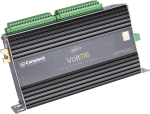


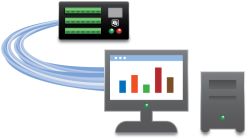
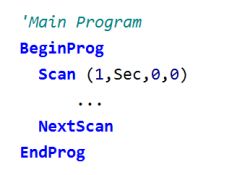

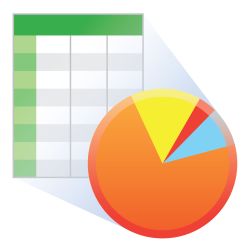






















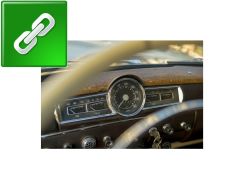




![データロガーのオペレーティング システム (OS) を更新する 2 部構成シリーズの第 1 部。データロガーとコンピューター間の直接接続と、デバイス構成ユーティリティの [OS の送信] タブを使用する更新方法の 1 つをデモンストレーションします。 os をローカル データロガーに送信する方法 (パート 1)](https://img.youtube.com/vi/Wm16Pjp-V2w/mqdefault.jpg)
![データロガーのオペレーティング システム (OS) を更新する 2 部構成のシリーズの第 2 部です。[接続] 画面からファイル コントロールを使用する更新方法の 1 つをデモンストレーションします。この方法は、すでに導入されていて、携帯電話や IP リンクなどの通信リンク上にあるリモート データロガーに適しています。<br /><br />
<b>重要:</b> このビデオは、シリアル番号が 7501 より大きい CR6 データロガー、CR300、または CR1000X には適用されません。 リモート データロガーへの os の送信方法 (パート 2)](https://img.youtube.com/vi/0uMY9ddZ9OE/mqdefault.jpg)












